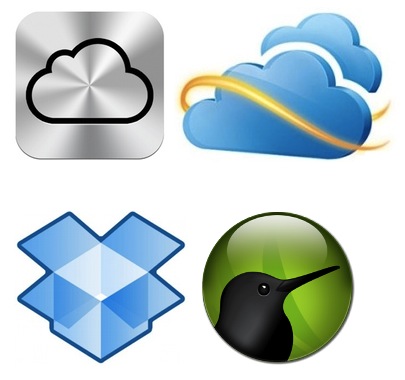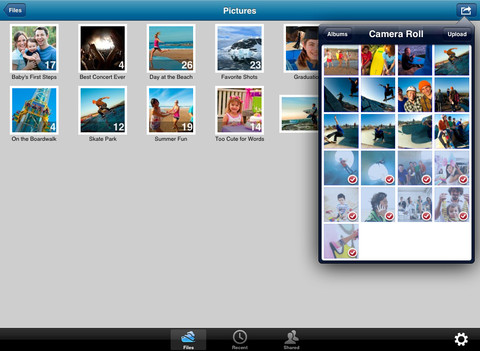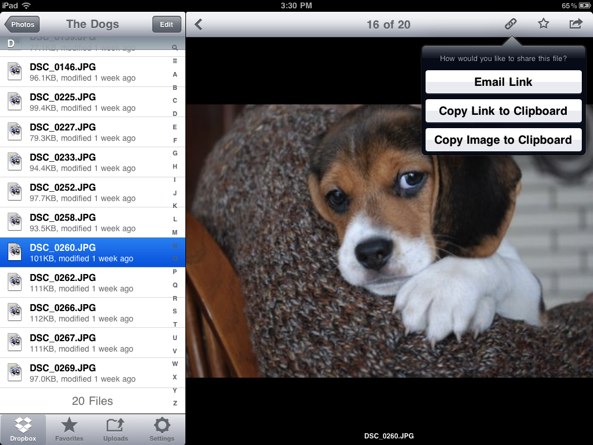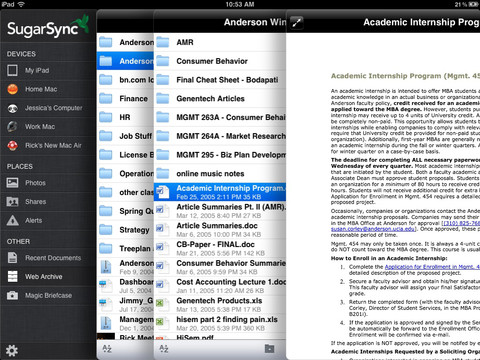 Microsoft yesterday updated its iOS SkyDrive client and released a brand new app for both Windows and Mac desktops while putting into effect paid storage upgrades.
Microsoft yesterday updated its iOS SkyDrive client and released a brand new app for both Windows and Mac desktops while putting into effect paid storage upgrades.
At the same time, Dropbox released an updated iOS client with new sharing capabilities and Google upped Google Docs storage to 5 GB.
iDownloadBlog thought you might be interested to check out how major cloud storage services fare in terms of value so we’ve put together a handy comparison matrix providing an at-a-glance overview of paid tiers available from iCloud, Dropbox, SkyDrive and SugarSync…
Competition in the increasingly crowded cloud storage space is heating up as Microsoft joined the fray, revelaing paid storage plans for its revamped SkyDrive service yesterday.
Dropbox responded by adding new features to its desktop and mobile clients that make it easy to share the files and folders in your Dropbox via direct links viewable by anyone with a browser, no Dropbox account required.
Rivalry is about to get even more serious as the search giant Google is rumored to enter the market with a cloud storage solution similar to Dropbox, dubbed Google Drive. The company also increased Google Docs storage to 5 GB today.
All four service lure folks with free or trial accounts that come with anywhere between two to seven gigabytes of free storage.
But first things first.
Here’s your current price matrix involving iCloud, Dropbox, SkyDrive and SugarSync.
iCloud
Previously branded as iTools in 2000, .Mac in 2002 and MobileMe in 2008, iCloud offers free accounts with 5 GB of storage to owners of either an iOS device using iOS 5.x or a Mac using OS X Lion 10.7.x.
Additional iCloud storage can be purchased in tiers of 10, 20 or 50 GB for $20, $40 or $100 a year.
However, iCloud is not a traditional cloud file storage and sharing service in that it requires an iOS device or a Mac to create an account and is mainly focused on keeping your stuff automatically synced between apps and devices.
[tube]DCjeSNomXrU[/tube]
iCloud automatically keeps your purchased music, music videos, television shows, movies, apps, audiobooks and e-books safe using a cloud locker that doesn’t count towards your storage quota.
It also keeps a stream of your last thousand photos for up to thirty days. This means your storage allotment gets used when backing up your iOS devices to iCloud, for iCloud email and when using the Documents in the Cloud feature in supported third-party apps.
SkyDrive
Microsoft sets up any new SkyDrive account with 7 GB free storage, but existing SkyDrive users can opt in here in order to get upgraded to 25 GB of free storage while still getting all of the benefits of the overhauled service.
To those who are already using more than 4 GB as of April 1: Microsoft has automatically opted you in to 25 GB of free storage. Paid SkyDrive storage is offered in tiers of 20, 50 or 100 GB for $10, $25 or $50 a year, respectively.
The Windows maker also released yesterday a preview version of the brand new local SkyDrive client for Windows (available for Windows Vista, Windows 7 and Windows 8 Consumer Preview) and Mac which takes clues from Live Mesh, their file synchronization service akin to DropBox.
They also updated their free iOS client (which debuted last December) with support for iPad Retina display (above image), new features to better manage, upload and share your files and the ability to open your SkyDrive files in other iOS apps.
Dropbox
Dropbox is by far the hottest cloud storage startup right now. They were the first to get cross-platform file sharing right so it should come as no surprise that Apple’s late co-founder Steve Jobs wanted to acquire the company for a cool $800 million.
A free Dropbox account comes with five gigabytes of storage. Additional room for your files in the Dropbox cloud can be purchased in tiers of fifty and hundred gigabytes for $25 or $50 a year.
Dropbox for Teams offering is also available, starting at $795 per year for first five users. It includes 1TB of shared cloud storage, centralized administration and billing and other perks.
Their universal iOS client got updated yesterday with the ability to share the files and folders on your Dropbox with anyone, using direct links. Dropbox is available for Windows, Mac and Linux boxes, in addition to mobile platforms such as Apple’s iOS, Research in Motion’s BlackBerry OS and Google’s Android platform.
SugarSync
Operated by San Mateo, California-based SugarSync, Inc., this service takes best features from SkyDrive and Dropbox and combines them into a compelling offering that might not look as pretty as rival services but gets the job done.
Paid SugarSync plans are available in tiers of 30, 60 or 100 GB for $49.99, $99.99 or $149.99 per year, respectively. If that’s not enough cloud storage for your needs, SugarSync offers 250 and 500 GB plans for a special introductory price of $249.99 and $399.99 per year.
Their new iPad app, depicted above, offers more advanced features than Dropbox, or so they say, including access to any folder from your computer via your iPad, per-folder syncing for offline access, the ability to create and edit text files within the app and more.
SugarSync also touts other advanced capabilities over competing cloud storage solutions and it is definitely available across the widest range of mobile platforms out there.
Hopefully, this article should help you compare popular cloud storage solutions before you commit to a monthly subscription plan.
Do you use any of the above services and for what purpose? Got any tips to share?
We’d love to hear your opinion down in the comments.



